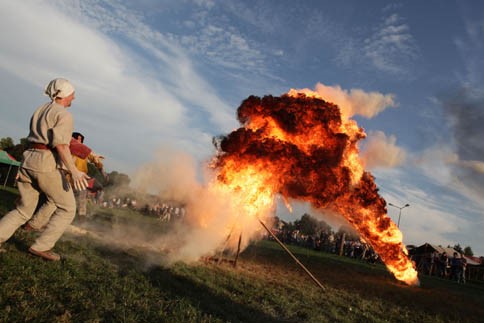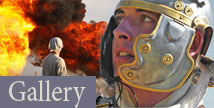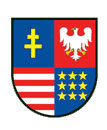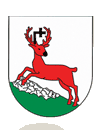What can the ancient world mean to the modern culture?
A lot. (...)
It should not only be a norm, but also a power nourishing the modern culture.
Tadeusz Zieliński
The mass character of the ‘Dymarki Świętokrzystkie’ archaeological festival is one of the reasons if not the main one why the local government in Nowa Słupia had been hesitating and could not decide about the shift in the way the event was organized. Preparation of an archeological festival did not seem to guarantee attraction of a wider audience as opposed to concerts and other staged events of well-known celebrities. There, however, has been no attempt to compare the scale and impact of the enterprise limiting it only to the presentation of the project ‘Man and Iron in the first centuries of our era’. Although some presentations have spectacular character, they do not aspire to become ‘mass culture’ and they will never be classified as such. It is due to the reason for organizing archaeological festivals which is not to influence the audience by means of a spectacle; it should only be a tool for reaching the aim. And the aim is to sensibilize the viewer to archaeological heritage and to pass on to him the knowledge in a simple way not excluding an‘entertaining’ factor at the same time, which is rather ‘added value’ than the essence of the presentation. Therefore, it is difficult to compare the presenters with actors or other performers though some of them might have skills comparable with those represented by actors, circus artists or even stunt men. Their basic objective is to show the public the most faithful picture of the past, that is why even the used equipment and tools need to bear traces of authenticity (being reconstructions or a replicas) and it is difficult to compare them with theatrical or film accessories. Contact with the audience with the exception of the mentioned happenings or performances has nothing to do with an actor’s play or a staged show. Interaction is mostly about explaining to the viewers all aspects connected with the topic of the festival and the presentation, which is a proof of presenters’ competences. Thus the direct contact with participants forms a basis for the creation of understanding which with the help of such an archaeological festival may function as the threshold for the social perception of the profession of an archaeologist or historian as well as for a need to care about cultural heritage.

Legio XXI Rapax during ‘Dymarki 2013’. Photo by A. M. Bielecka
The ‘slag-pit furnace’ project could not have evolved to the form it acquired at the time the Cultural and Archaeological Center was opened without the acceptance of the main organizer – the Nowa Słupia commune responsible for the enterprise since 1997. The ‘Dymarki Świętokrzyskie’ festival receives bigger and bigger support of local authorities at the levels of province and district. A positive signal was financial help from the local government of the province supporting preparation of the presentations. There are prospects for the coming future that also other institutions such as the National Museum in Kielce, the Museum of Nature and Technology in Starachowice as well as the Jan Kochanowski University in Kielce will declare their engagement in the project.
Impact of the ‘Dymarki’ festival on the promotion of the Świętokrzystkie province requires breaking down the existing barriers in the way the enterprise is perceived – alongside its festival form providing a ‘summary’ of the topic during the August event it should also function as an ongoing activity in the newly opened Center.

Speech of Wiesław Gałka - the Mayor of Nowa Słupia during the opening of the Cultural and Archaeological Center in 2011. Photo by W Habdas.
It is difficult basing on the current conditions to evaluate the possibility of creating a more subject-matter image. Our goal is to promote the perspective of launching in the present location a center available for further research on ancient metallurgy of the Świętokrzystkie region, which was a proposal of Kazimierz Bielenin (2006, 27) and the key aim of the authors of the Świętokrzystkie Center of Experimental Archaeology. A positive signal was the fact that in 2012 a group of inhabitants of Nowa Słupia representing the ‘Łysogóry’ Agri-Tourism Association joined the project ‘Man and Iron in the first centuries of our era’.
Finding the right compromise between populist aspect of the organized events or even of cultural unit’s activities and a real promotion of cultural heritage is a problem concerning many enterprises.
Ancient metallurgy in the Świętokrzystkie region owing to the ‘Dymarki’ festival is an element of promotion of the Kielce region outside. The form of this promotion should inspire a lot more institutions in order for the effects to be more visible in the increasing number of recipients. It is also important that the inhabitants are aware of their responsibility for the archaeological heritage however it requires a mature attitude towards creation of conditions for promotion of reliable knowledge on this heritage.
It seems that the ‘nourishing power’ for the ‘Dymarki’ festival’s development can result from breaking of some of stereotypical beliefs and habits as well as directing all organizational efforts towards promotion of ancient metallurgy and indicating that it is not only a local asset. Such an activity will prove for certain on a larger scale that the Świętokrzystkie metallurgical district is truly a ‘trademark of cultural heritage’ of the whole region.
We would like to invite everyone to support our project and contribute to its development. Restitution of ‘Dymarki’ as supralocal heritage requires a wide group of people interested in its scientific aspect. We would like to form this type of cooperation with the local government of Nowa Słupia and the local community but also with all those who would like to join this process. We are planning therefore to implement a series of activities which will be advertised on the ‘Dymarki’ Facebook profile and within the ‘Dymarki’ Internet forum.
We would like to invite everyone to participate in the actions which will serve preparation for the coming two editions of the ‘Dymarki’ festival and finally the attractive 50th anniversary of the enterprise in the year 2016.

‘Amber fire-show’ during the ‘Dymarki’ festival in 2012. Photo by W. Habdas











